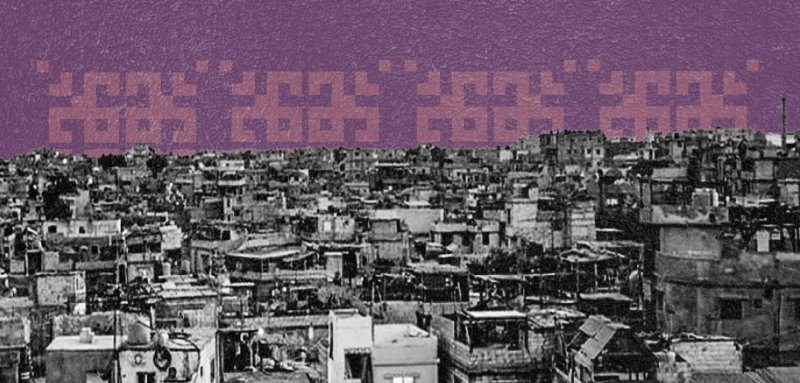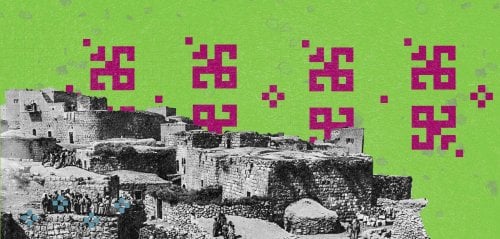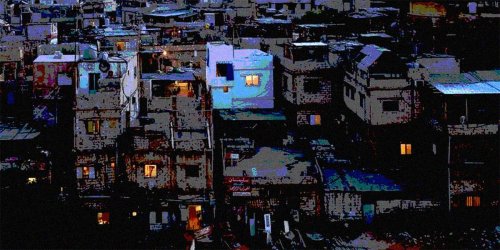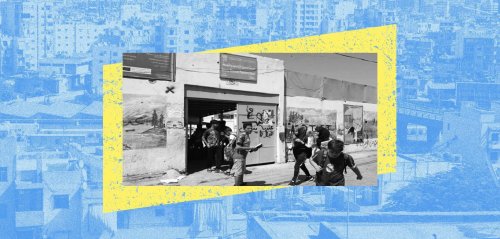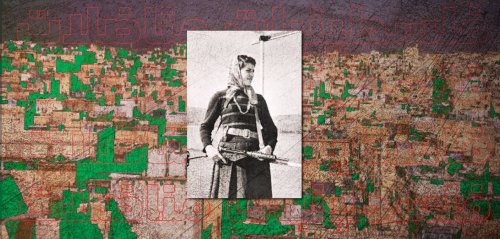This article falls under the collection, "75 Years of Nakba... Dreaming in the midst of Tragedy"
Among the stories told, and are still being told, by those who remain from the Palestinian Nakba generation, is that they agreed to take residence in the Palestinian refugee camps established in five areas under the supervision of UNRWA, because they believed they were temporary and that they would eventually return to Palestine. However, their hopes were shattered and the dream grew even more distant following the Arab defeat in the Naksa of 1967.
After 75 years of the Palestinian Nakba, the Palestinian refugee camps have become significant sites for Palestinians, as they played a crucial role on the political, social, and cultural levels, even in the struggle against Israeli occupation. However, over time, the number of refugees in these camps has increased, along with their repeated humanitarian suffering. They have also faced discrimination and Israeli aggression, including the cleansing that some camps have been subjected to due to regional political events.
Some refugee camps have become more like popular areas that play a social and even economic role in their regions, such as the Yarmouk camp in Syria before 2011, the Jabalia camp in the Gaza Strip, the Aqabah camp in Jordan, and the Balata and al-Am'ari camps in the West Bank.
Among the stories told by the remaining generation of the Palestinian Nakba, is that they agreed to reside in refugee camps established in areas under UNRWA supervision, since they believed it was temporary and that they'd eventually return to Palestine
6 million Palestinian refugees
Around 800,000 Palestinian refugees left the historic Palestine in 1948, according to UNRWA. The numbers registered with the agency reached 6 million Palestinians in the diaspora in the four Levant countries, distributed in five administrative regions affiliated with UNRWA, and not in other regions outside it, noting that unmentioned numbers immigrated to European and American countries.
The refugees are distributed with 59% in Jordan, Syria, and Lebanon, as mentioned by the Palestinian WAFA News and Info Agency, and 17% in the West Bank and 24% in the Gaza Strip. Approximately 29% of them live in 58 camps, distributed as follows: 10 camps in Jordan, 9 camps in Syria, 12 camps in Lebanon, 19 camps in the West Bank, and 8 camps in the Gaza Strip. However, due to overcrowded living conditions in the camps, additional camps have emerged and branched out as emergency camps, as a result of the renewed conflicts in the region.
Concerns about the future of Gaza's camps
Despite the architectural development witnessed by Palestinian camps in the Gaza Strip and their vertical and horizontal expansion, they can be described more akin to "sardine cans" due to overcrowding and population congestion. This is exacerbated by the Israeli blockade, which restricts movement and travel, with the exception of a single outlet that has recently been in regular operation; the Rafah crossing.
However, the situation is even worse in terms of infrastructure, humanitarian services, and even recreational spaces within the Palestinian camps. Some camps do not even have parks due to urban expansion and limited space for public transportation. Any available space has also been converted for other public uses, including areas for street vendors selling from carts. This fact is applicable to the majority of parks in the Gaza Strip.
The problem in Gaza is progressing with some differences compared to other Palestinian camps in the diaspora, due to the halt in the migration of camp residents to the city center. Additionally, the small size of the Gaza Strip compared to its population poses a risk. According to the data of the Ministry of Interior for the end of 2022, the population in the Gaza Strip exceeded 2.375 million people, including approximately 1.5 million registered refugees with UNRWA according to the latest figures from 2021. Thus, two-thirds of Gaza's population are refugees.
In addition to the imminent danger surrounding the future of the camps due to predictions of a population explosion within a small area of no more than 360 square kilometers, the danger is further amplified by the absence of a political solution and the unceasing tension and conflict in the region. This is particularly evident during Israeli aggressions and attacks launched against the Gaza Strip, where targets within the camps are bombarded, increasing the likelihood of casualties and damage to homes due to overcrowding. This has occurred in previous instances, with the most recent being the bombing of the al-Shaout area in the Rafah camp in the southern Gaza Strip and the Jabalia camp in the northern Gaza Strip, resulting in dozens of casualties during August of last year 2022.
UNRWA says around 800,000 Palestinian refugees left Palestine in 1948. The numbers registered with the agency reached 6 million Palestinians in the diaspora within the Levant countries of Jordan, Syria, and Lebanon, alongside the West Bank and Gaza Strip
West Bank camps under occupation
In the West Bank, there are 19 camps designated for Palestinian refugees. They are as follows; al-Am'ari, Jalazone, Dheisheh, al-Arroub, Fawwar, al-Faria, Balata, Beit Jibrin, Jenin, Deir 'Ammar, Camp No. 1, Shu'fat, Tulkarm, Aida, Askar, Aqabat Jaber, Ein Al Sultan, Qalandiya, and Nur Shams refugee camps. UNRWA estimates that there are approximately 830,000 refugees residing in these camps.
But the suffering of the camps in the West Bank is manifested in the continuous attempts by the Israeli army to plant tools and cameras with strict surveillance inside the camps, with ina strong concentration of checkpoints near them, especially regarding what is recently happening in the camps within the cities of Jenin and Nablus.
Jordanian camps and the "Jerash Gaza" camp
According to the latest statistics from the Department of Palestinian Affairs in the Jordanian Ministry of Foreign Affairs and Expatriates, there are approximately 2,275,589 Palestinian refugees, accounting for 39.1% of the registered refugees in all areas of operation of the United Nations Relief and Works Agency (UNRWA). The number of refugees inside the ten recognized camps is 396,006, representing 17.4% of the registered refugees in Jordan, while the number of refugees outside the ten camps is 1,879,583, accounting for 82% of the registered refugees in Jordan.
However, the debate continues about the percentage of Palestinians in Jordan, considering that a large number of them hold official Jordanian documents. Palestinian sources estimate their percentage to be over 60%, while Jordanian sources suggest that they are approximately 40%.
UNRWA established ten camps for Palestinian refugees in Jordan, namely the camps of Irbid, Baqa'a, Husn, Zarqa, Talbieh, Jabal el-Hussein, Souf, Amman, Marka, and finally, Jerash camp, known among Jordanians as "Jerash Gaza," which was established in 1968 as the last camp in Jordan to host the largest number of Palestinian refugees in the region. It was considered an emergency camp to accommodate tens of thousands of displaced Gazans who were forced to leave the Gaza Strip after the 1967 Naksa.
In recent years, some Palestinian camps have witnessed the migration of residents from the camps to the heart of Jordanian cities and villages, while many continue to suffer difficult humanitarian and economic conditions. With the increase in population density, the poor infrastructure and public services keep worsening. However, the camp witnessing the most suffering among the camps is the "Jerash Gaza" camp.
The "Jerash Gaza" camp is home to more than 24,000 refugees, according to the latest data from UNRWA in 2021. Human rights organizations also mention that out of four buildings in the "Jerash Gaza" camp, three are uninhabitable due to structural problems. It is also considered one of the poorest areas in the Kingdom of Jordan.
From time to time, the House of Representatives activates the issue of "Gaza's sons", as is known in the council, but with no progress, as they are the poorest in Jordan due to the restrictions imposed on them in the field of work. They are not allowed to work in the public sector, and there is a long list of professions limited to Jordanian citizens, such as medicine, engineering, pharmacy, and others that require membership in professional associations and trade unions, which is restricted to the citizens of the country.
They face difficulties in various aspects of life, including education, health, social, and economic challenges. There are growing concerns about the collapse of the United Nations Relief and Works Agency for Palestine Refugees in the Near East (UNRWA), which operates the schools where their children study. This means that they will have to bear the costs of educating their children in compulsory elementary schools. Moreover, universities treat them as foreign nationals and charge them fees in US dollars.
Camps in Lebanon are subjected to the most severe forms of discrimination in basic citizenship rights, especially in terms of employment discrimination, being deprived of more than 70 public jobs, and are prohibited from owning property outside the camps
Lebanon's camps and discrimination
The camps in Lebanon are subjected to the most severe forms of discrimination in basic citizenship rights, especially in terms of employment discrimination and being deprived of more than 70 public jobs. They are also prohibited from owning property outside the camps. Additionally, there is poor infrastructure, limited services, and difficulty accessing some camp facilities due to overcrowding.
According to the data from UNRWA in 2021, the number of Palestinian refugees in Lebanese camps, totaling 12 camps, reached approximately 480,000 refugees. The largest concentration of refugees is in Ein el-Hilweh camp, along with the camps of Beddawi, Nahr al-Bared, El-Buss, Mieh Mieh, Bourj el-Barajneh, Rashidieh, Burj Shemali, Shatila, Dbayeh, Mar Elias, and Wavel camp.
More than 30,000 Palestinian refugees fled from Syrian camps and sought refuge in Palestinian camps in Lebanon, joining refugees residing there and sharing their escalating hardships and suffering. They transferred their records and sought assurances for the continuation of humanitarian aid in the camps.
Strategic solutions to the plight of Palestinian refugees in areas experiencing political conflicts in the West Bank, Gaza Strip, Lebanon, and Syria remain elusive. The focus remains on temporary solutions and demands for the continuity of humanitarian aid
90% of Palestinians within Syrian camps are extremely poor
According to the latest registration of refugee numbers in 2011, there were over 650,000 Palestinian refugees in Syria. However, as UNRWA clarifies, the available data reflects the most recent information the agency could access due to obstacles and challenges it faces.
During the Sixth Brussels Conference on "Supporting the Future of Syria and the Region", the UNRWA Commissioner-General stated that the Palestinian community is among the most vulnerable refugee communities in the region. He emphasized that 90% of them live in poverty out of a total of 438,000 Palestinian refugees who remain in Syria out of an original 650,000. They are located in 12 camps: Yarmouk, Dara'a, Latakia, Neirab, Jaramana, Hama, Homs, Khan Dannoun, Sbeineh, Ein el-Tal, Qabr Essit, and Mar Elias.
By the end of December 2022, the Action Group for the Palestinians of Syria – a human rights organization specialized in monitoring the conditions of Palestinian refugees in Syria and documenting the repercussions of the Syrian war – reported that around 130,000 Palestinians from Syrian camps had reached Europe, mostly through unofficial routes. Additionally, approximately 31,000 Palestinian refugees had fled from Syria to Lebanon by October 2022, some attempting illegal migration routes, while others perished at sea, including the victims of the sunken Tartus boat.
Yarmouk camp is the largest camp that dominated the Palestinian scene in Syria following the outbreak of events in 2011. Figures indicate that it housed around 160,000 Palestinian refugees. It experienced a series of bombardments and clashes between parties to the Syrian conflict. At present, only thousands have returned to live in the camp after the Syrian regime allowed them to come back.
On the other hand, strategic solutions to the plight of Palestinian refugees in areas experiencing political conflicts in the West Bank, Gaza Strip, Lebanon, and Syria remain elusive. Instead, the focus predominantly remains on temporary solutions, repeated humanitarian demands, the continuity of aid, and demands for the improvement of infrastructure. However, there is a lack of consideration for the future and comprehensive solutions to address the issues of population expansion and urban planning, or the risk of spreading armed conflicts to these areas, leaving Palestinians to face a dark and uncertain future amidst the ongoing conflicts and turmoil in the region.
Raseef22 is a not for profit entity. Our focus is on quality journalism. Every contribution to the NasRaseef membership goes directly towards journalism production. We stand independent, not accepting corporate sponsorships, sponsored content or political funding.
Support our mission to keep Raseef22 available to all readers by clicking here!
Interested in writing with us? Check our pitch process here!
